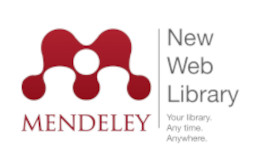A Decision Support System for Evaluation Service Quality by Fuzzy SERVQUAL: A Case Study of a Modern Riteil
DOI:
https://doi.org/10.59976/jurit.v1i3.25Abstract
This research was conducted in a retail store in the city of Semarang. The main focus was to measure the quality of service against consumer perceptions and expectations of the retail rate. This study analyses the factors influencing consumer perception and how to design services to match consumer expectations. The population in this study is consumers who shop. The method used in this study is the Fuzzy Servqual method. Based on the results of processing and analysis, it is known that the dimensions that have the highest gap value are the Assurance dimension (-1.5175), while the tangibles dimension (-1.37), reliability (-0.318), responsiveness (-0.176) and empathy (0.315). From the result of the gap value, the empathy dimension is very satisfying, and customers feel comfortable with employee service, friendliness, and assistance with product info at retail. The assurance dimension is a dimension that must be improved by improving the state of the room, temperature, and lighting and providing a safe area for retail protesters.
Downloads
References
H. M. Putri, “Measuring service quality of halal certification in Indonesia food industry using Fuzzy-SERVQUAL method for service quality improvement,” Proceedings of the International Conference on Industrial Engineering and Operations Management. pp. 1782–1791, 2021. [Online]. Available: https://api.elsevier.com/content/abstract/scopus_id/85114233618
R. Fitriana, “Proposed development process to improve customer quality of service with fuzzy-servqual and data mining methods in insurance agency,” AIP Conference Proceedings, vol. 2485, no. 1. 2023. doi: 10.1063/5.0104945.
M. Beheshtinia, “A fuzzy QFD approach using SERVQUAL and Kano models under budget constraint for hotel services,” Total Qual. Manag. Bus. Excell., vol. 30, no. 7, pp. 808–830, 2019, doi: 10.1080/14783363.2017.1340830.
F. Krisnawati, “Fuzzy SERVQUAL to Measure the Service Quality of Tutoring Institutions: A Systematic Literature Review Using PRISMA,” E3S Web of Conferences, vol. 426. 2023. doi: 10.1051/e3sconf/202342601064.
X. Jiang, “Evaluating the service quality of insular and coastal recreational fisheries by integration of the SERVQUAL-fuzzy Kano model and importance-performance analysis,” Ocean Coast. Manag., vol. 243, 2023, doi: 10.1016/j.ocecoaman.2023.106753.
I. Milyardi, “Evaluation Of Service Quality At The ‘Merah Putih’ Gamma Irradiator Using A Fuzzy Servqual Based Method,” AIP Conference Proceedings, vol. 2583. 2023. doi: 10.1063/5.0116904.
J. B. G. Junior, “Application of the QFD-fuzzy-SERVQUAL methodology as a quality planning tool at the surgical centre of a public teaching hospital,” BMC Med. Inform. Decis. Mak., vol. 22, no. 1, 2022, doi: 10.1186/s12911-022-01746-4.
V. R. B. Kurniawan, “A Combined Application of SERVQUAL and fuzzy DEMATEL to Evaluate a University’s Service Quality,” ACM International Conference Proceeding Series. 2022. doi: 10.1145/3557738.3557837.
K. Amar, “A Fuzzy SERVQUAL based Method for Measuring Quality Service in the Telecommunication Industry,” AIP Conference Proceedings, vol. 2543. 2022. doi: 10.1063/5.0094753.
S. Golrizgashti, “Assessing after-sales services quality: Integrated SERVQUAL and fuzzy Kano’s model,” Int. J. Serv. Econ. Manag., vol. 11, no. 2, pp. 137–166, 2020, doi: 10.1504/IJSEM.2020.108981.
P. H. Nguyen, “A Fuzzy Analytic Hierarchy Process (FAHP) Based on SERVQUAL for Hotel Service Quality Management: Evidence from Vietnam,” J. Asian Financ. Econ. Bus., vol. 8, no. 2, pp. 1101–1109, 2021, doi: 10.13106/jafeb.2021.vol8.no2.1101.
H. Dinçer, “SERVQUAL-based evaluation of service quality in Turkish health industry with fuzzy logic,” Interdisciplinary Perspectives on Operations Management and Service Evaluation. pp. 213–231, 2020. doi: 10.4018/978-1-7998-5442-5.ch011.
I. Firdaus, “Application of Fuzzy Servqual Method to Measure User Satisfaction of Mooc Service Quality,” E3S Web of Conferences, vol. 202. 2020. doi: 10.1051/e3sconf/202020214007.
A. R. Prayudha, “Analysis of student satisfaction of UPI SPOT e-learning services in UPI postgraduate Bandung, Indonesia, using the Fuzzy-Servqual Method,” IOP Conference Series: Materials Science and Engineering, vol. 830, no. 3. 2020. doi: 10.1088/1757-899X/830/3/032009.
M. Maisuroh, “A Fuzzy Servqual Method for Evaluated Umrah Service Quality,” Proceeding - ICoSTA 2020: 2020 International Conference on Smart Technology and Applications: Empowering Industrial IoT by Implementing Green Technology for Sustainable Development. 2020. doi: 10.1109/ICoSTA48221.2020.1570614964.
M. Mashhadiabdol, “Analysis of the gap between customers’ perceptions and employees’ expectations of service quality based on fuzzy SERVQUAL logic (case study: Mofid children’s hospital in Tehran, Iran),” Int. J. Serv. Oper. Manag., vol. 17, no. 2, pp. 119–141, 2014, doi: 10.1504/IJSOM.2014.058840.
D. P. Winata and A. K. Anugrah, “Pengaruh Kualitas Pelayanan Terhadap Kepuasan Pelanggan Pada Bisnis Ritel Erablue Di Tangerang,” MENAWAN J. Ris. dan Publ. Ilmu Ekon., vol. 1, no. 6, pp. 126–136, 2023.
A. Kamaludin, “Hubungan Kualitas Pelayanan Terhadap Kepuasan Konsumen Pada Apotik Puji Lestari Majalengka,” J. Ilm. Indones., vol. 4, no. 12, pp. 47–55, 2019.
F. L. Lizarelli, “Integration of SERVQUAL, Analytical Kano, and QFD using fuzzy approaches to support improvement decisions in an entrepreneurial education service,” Appl. Soft Comput., vol. 112, 2021, doi: 10.1016/j.asoc.2021.107786.
T. Lupo, “A fuzzy ServQual based method for reliable measurements of education quality in Italian higher education area,” Expert Syst. Appl., vol. 40, no. 17, pp. 7096–7110, 2013, doi: 10.1016/j.eswa.2013.06.045.
S. Yüksel, “SERVQUAL-Based performance analysis of agricultural financing in E-banking industry: An evaluation by IT2 fuzzy decision-making model,” Tools and Techniques for Implementing International E-Trading Tactics for Competitive Advantage. pp. 21–41, 2019. doi: 10.4018/978-1-7998-0035-4.ch002.
A. Faizah, “Total Quality Management of Information System for Quality Assessment of Pesantren Using Fuzzy-SERVQUAL,” E3S Web of Conferences, vol. 31. 2018. doi: 10.1051/e3sconf/20183110011.
S. Behdioğlu, “Evaluating service quality by fuzzy SERVQUAL: a case study in a physiotherapy and rehabilitation hospital,” Total Qual. Manag. Bus. Excell., vol. 30, no. 3, pp. 301–319, 2019, doi: 10.1080/14783363.2017.1302796.
A. Toloie-Eshlaghy, “An investigation and ranking public and private islamic banks using dimension of service quality (SERVQUAL) based on TOPSIS fuzzy technique,” Appl. Math. Sci., vol. 5, no. 61, pp. 3031–3049, 2011, [Online]. Available: https://api.elsevier.com/content/abstract/scopus_id/80755187751
N. Stefano, “A fuzzy SERVQUAL based method for evaluated of service quality in the hotel industry,” Procedia CIRP, vol. 30. pp. 433–438, 2015. doi: 10.1016/j.procir.2015.02.140.
C. Chou, “An evaluation of airline service quality using the fuzzy weighted SERVQUAL method,” Applied Soft Computing Journal, vol. 11, no. 2. pp. 2117–2128, 2011. doi: 10.1016/j.asoc.2010.07.010.
Ž. Stević, “EVALUATION OF DIMENSIONS OF SERVQUAL MODEL FOR DETERMINING QUALITY OF PROCESSES IN REVERSE LOGISTICS USING A DELPHI – FUZZY PIPRECIA MODEL,” Rom. J. Econ. Forecast., vol. 25, no. 1, pp. 139–159, 2022, [Online]. Available: https://api.elsevier.com/content/abstract/scopus_id/85128568556
R. Liu, “Applying the fuzzy SERVQUAL method to measure the service quality in certification & inspection industry,” Appl. Soft Comput. J., vol. 26, pp. 508–512, 2015, doi: 10.1016/j.asoc.2014.10.014.
E. A. Dalimunthe, D. Irmayani, and M. N. S. Hasibuan, “Menggunakan Metode Fuzzy Service Quality untuk Mengukur Kinerja Pelayanan di Café Hitam Putih,” J. Ilmu Komput. dan Sist. Inf., vol. 6, no. 1, pp. 21–30, 2023.
A. Awasthi, “A hybrid approach based on SERVQUAL and fuzzy TOPSIS for evaluating transportation service quality,” Comput. Ind. Eng., vol. 61, no. 3, pp. 637–646, 2011, doi: 10.1016/j.cie.2011.04.019.
T. Prabowo, I. Machfud, and D. Lestari, “Penerapan Fuzzy–Service Quality Terhadap Tingkat Kepuasan Pelayanan BPJS Ketenagakerjaan,” J. Autom. Comput. Inf. Syst., vol. 2, no. 1, pp. 82–90, 2022.
K. Harefa, “Analisis Kualitas Pelayanan Dengan Menggunakan Metode Fuzzy Servqual,” KLIK Kaji. Ilm. Inform. dan Komput., vol. 3, no. 2, pp. 211–219, 2022.
Downloads
Published
How to Cite
Issue
Section
License
Copyright (c) 2023 Juriyah Ayu, Deswita Sri Yani

This work is licensed under a Creative Commons Attribution 4.0 International License.





















